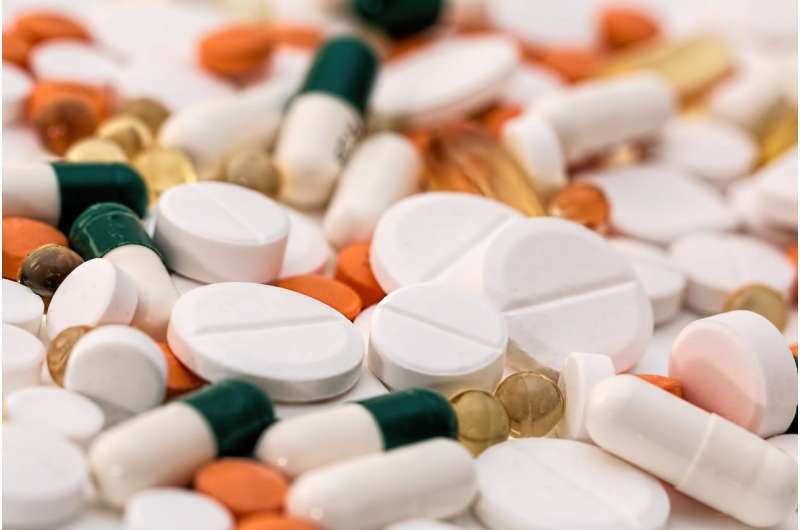Credit: CC0 Public Domain
A team of eight EPFL students has come up with a portable biosensor that can measure the amount of vancomycin in a patient's blood stream, enabling doctors to better control the dosage and reduce harmful side effects. Their technology – developed for the upcoming SensUs international competition – could eventually be used for other antibiotics as well.
At EPFL's Discovery Learning Labs (DLL) – educational facilities designed to promote cross-disciplinary research – a groundbreaking new device is in the works. Eight Master's students in microengineering, bioengineering and life sciences have teamed up (SenSwiss) to develop a portable biosensor as their entry in the SensUs competition, which is held at the Eindhoven University of Technology in the Netherlands on 7–8 September 2018. Their device can provide precise measurements of the amount of vancomycin, an antibiotic used as a last-resort treatment, in a patient's blood plasma. This information will help doctors deliver exactly the amount of drug needed and therefore reduce the occurrence of harmful side effects. For instance, vancomycin is known to cause damage to the kidneys and to hearing.
"We started working on the biosensor last fall alongside our coursework, and this summer have been working on it full-time. Being able to use the DLL has made our research a lot easier, since they have all the equipment we need," says Alix Faillétaz, a Master's student in bioengineering. This is the second year in a row that EPFL is participating in SensUs, where its team will be up against students from 12 other universities from around the world. "The competition was launched three years ago. It's really demanding and is a huge challenge for the students. They must overcome a series of problems and learn to work together, trust each other and delegate tasks based on each individual's specific skills," says Professor Philippe Renaud, who is coaching the team.
Polarization-based measurements
Credit: Ecole Polytechnique Federale de Lausanne
SensUs aims to encourage the development of biosensors, targeting a different application each year – although the objective always relates to measuring a biomarker with an impact on public health. The objective is chosen by a panel of experts that includes Professor Renaud. Existing tests to measure vancomycin require a great deal of time, a considerable amount of blood and a special machine that costs tens of thousands of Swiss francs. But the EPFL team's portable biosensor can take measurements in less than five minutes with just a few drops of blood, and costs under 5,000 francs. Their device shines polarized light on a sample containing a homogeneous mixture of the patient's blood plasma and a synthetized peptide (an amino-acid sequence) solution.
How does it work? "We first created a peptide that bonds specifically to vancomycin, and then we added a fluorescent compound," says Faillétaz. "As the vancomycin bonds to the fluorescent peptide, the peptide's movement slows and the light it emits becomes more and more polarized. By measuring the degree of light polarization, we can calculate the vancomycin concentration in a patient's blood." According to Professor Renaud, this method already exists but has never been used to make a portable biosensor.
At the competition, the EPFL team will have to not only prove their biosensor's efficacy by analyzing various samples, but also demonstrate its benefits for the healthcare industry and its market potential. "By changing the synthesis compound, our biosensor could be used to detect other antibiotics and biomarkers," says David Vilela, a Master's student in life sciences.
Provided by Ecole Polytechnique Federale de Lausanne























